Abstract
1. In the spontaneously breathing anaesthetized dog, the systemic circulation was perfused at constant blood flow; there was no pulmonary blood flow and the systemic arterial blood PO2 and PCO2 were controlled independently by an extracorporeal isolated pump-perfused donor lung preparation. The carotid and aortic bodies were separately perfused at constant pressure with blood of the same composition as perfused the systemic circulation.
2. Apnoeic asphyxia, produced by stopping the recipient animal's lung movements and, at the same time, making the blood perfusing the systemic circulation and the arterial chemoreceptors hypoxic and hypercapnic by reducing the ventilation of the isolated perfused donor lungs, caused an increase in systemic vascular resistance.
3. While the systemic arterial blood was still hypoxic and hypercapnic, withdrawal of the carotid and aortic body `drive' resulted in a striking reduction in systemic vascular resistance. Re-establishing the chemoreceptor `drive' immediately increased the vascular resistance again.
4. Apnoeic asphyxia carried out while the carotid and aortic bodies were continuously perfused with oxygenated blood of normal PCO2 had little or no effect on systemic vascular resistance.
5. The systemic vasoconstrictor response produced by apnoeic asphyxia was reduced or abolished by re-establishing the recipient animal's lung movements, and this effect occurred in the absence of changes in the composition of the blood perfusing the systemic circulation and arterial chemoreceptors. This abolition of the vasoconstriction was due to a pulmonary reflex.
6. Apnoeic asphyxia slowed the rate of the beating atria due to excitation of the carotid and aortic body chemoreceptors. This response can be over-ridden by an inflation reflex arising from the lungs.
7. It is concluded that the cardiovascular responses observed in apnoeic asphyxia are due, at least in part, to primary reflexes from the carotid and aortic body chemoreceptors engendered by arterial hypoxia and hypercapnia. The appearance of these responses is, however, dependent upon there being no excitation of a pulmonary (inflation) vagal reflex.
Full text
PDF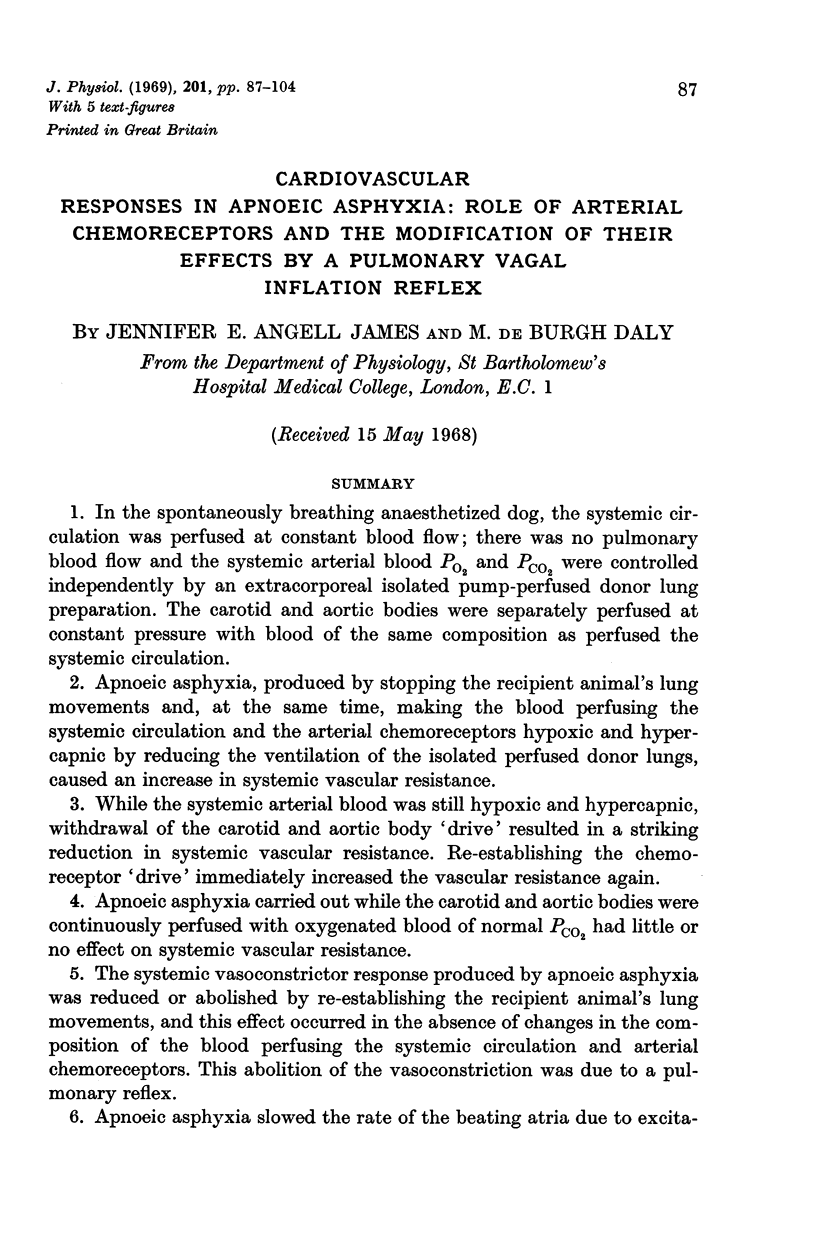
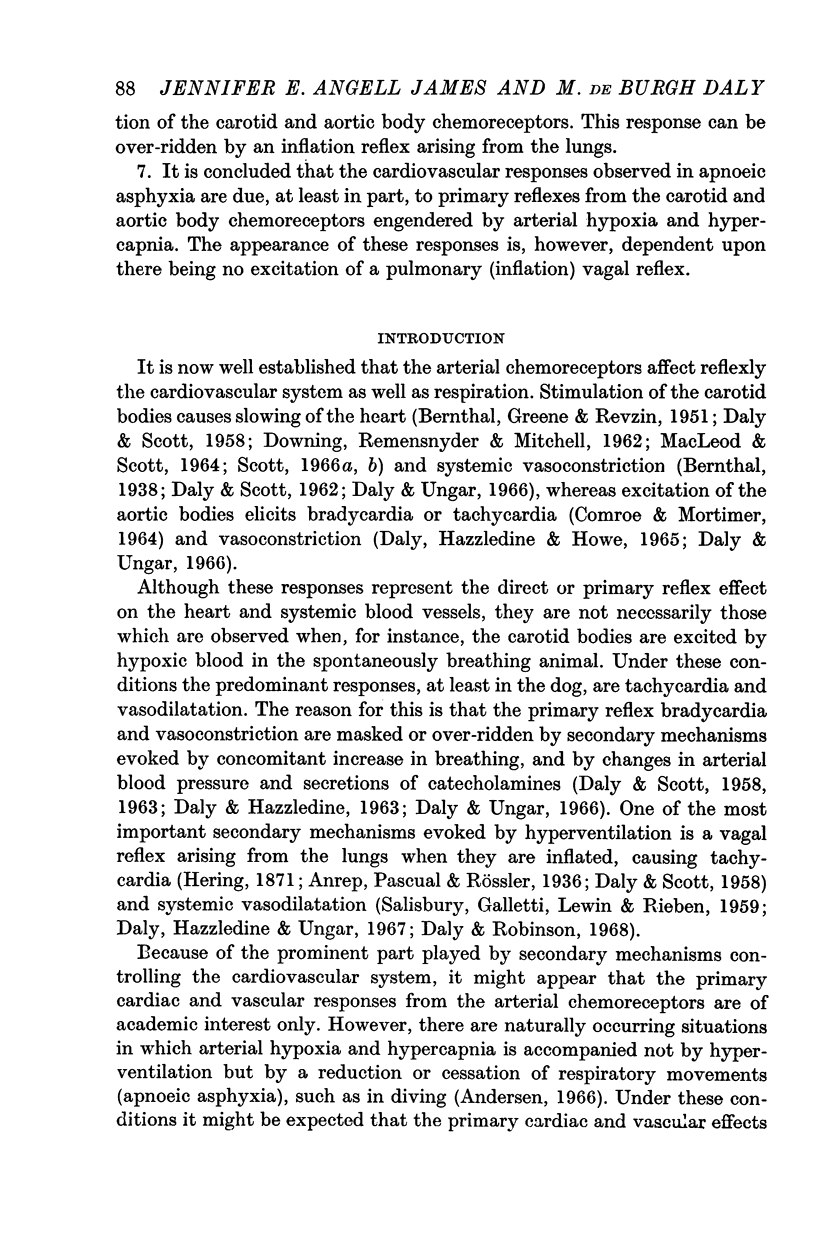
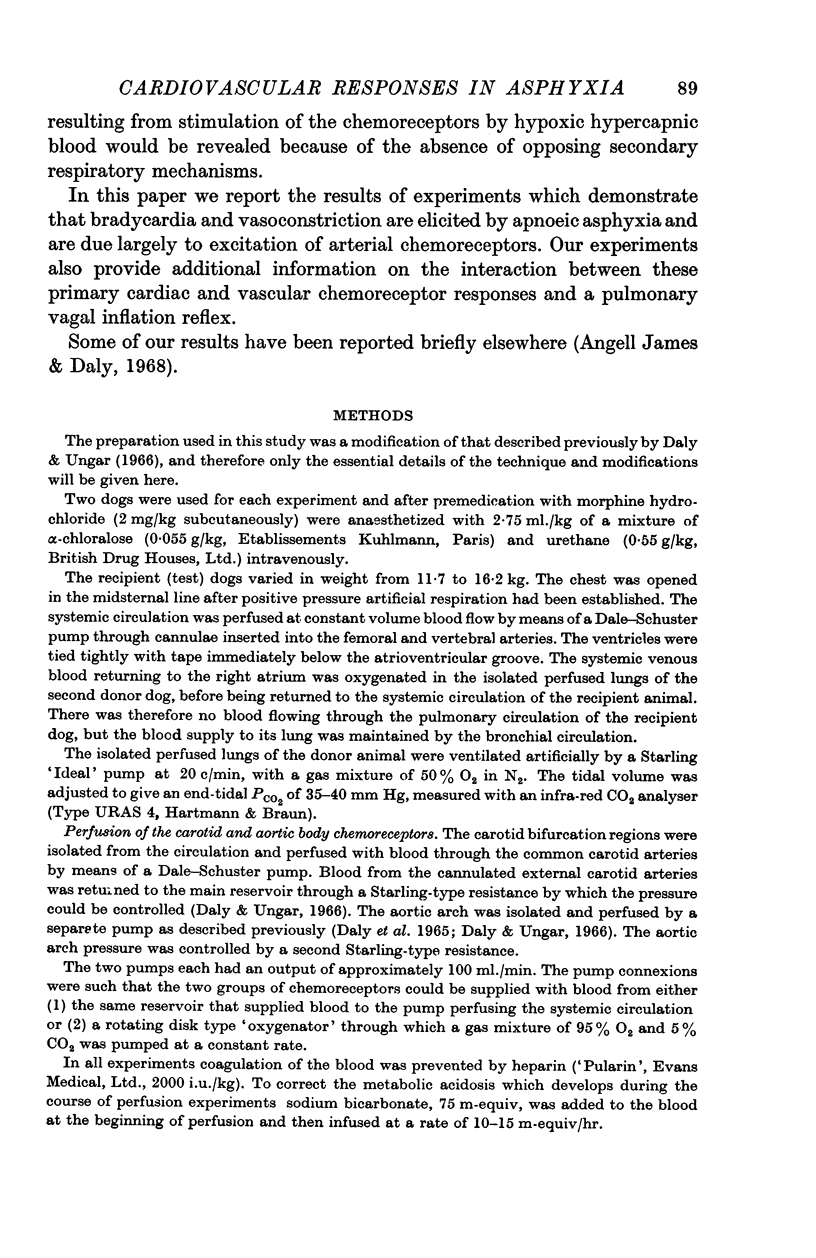
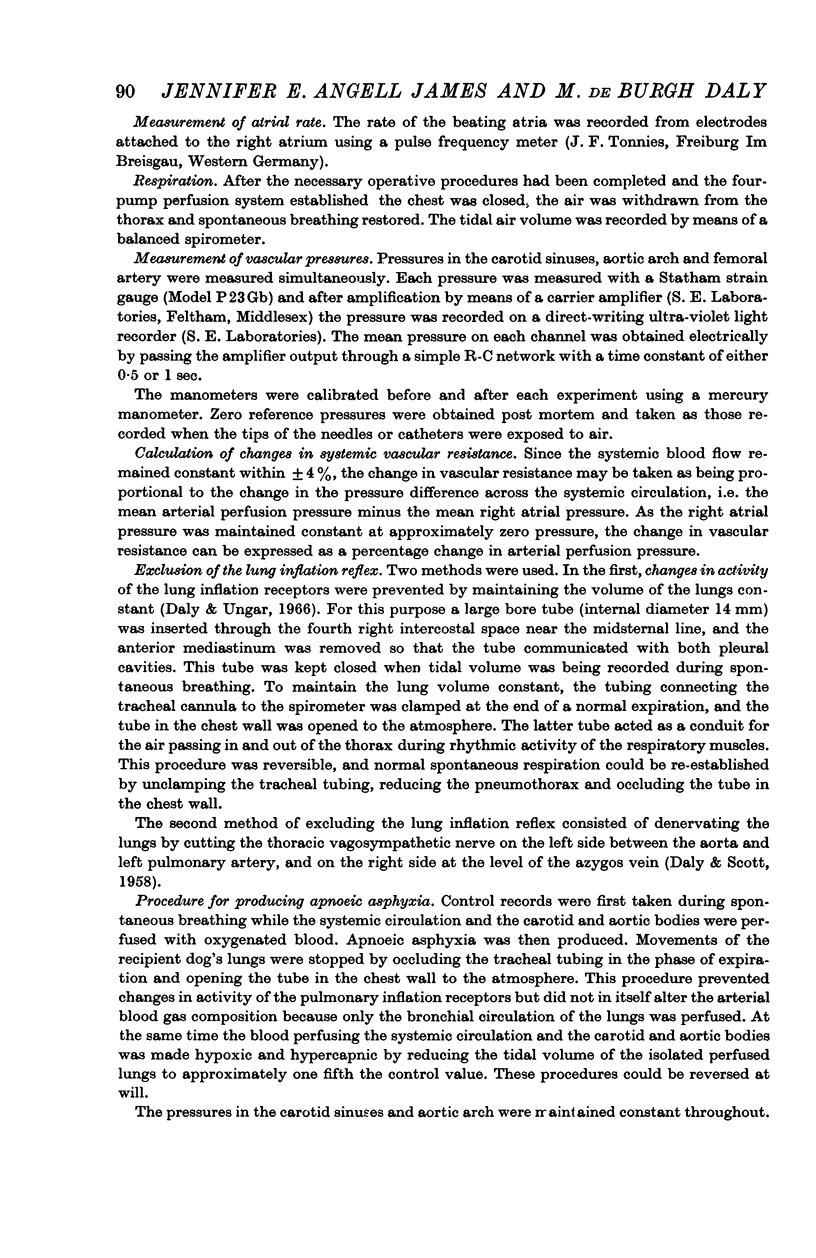
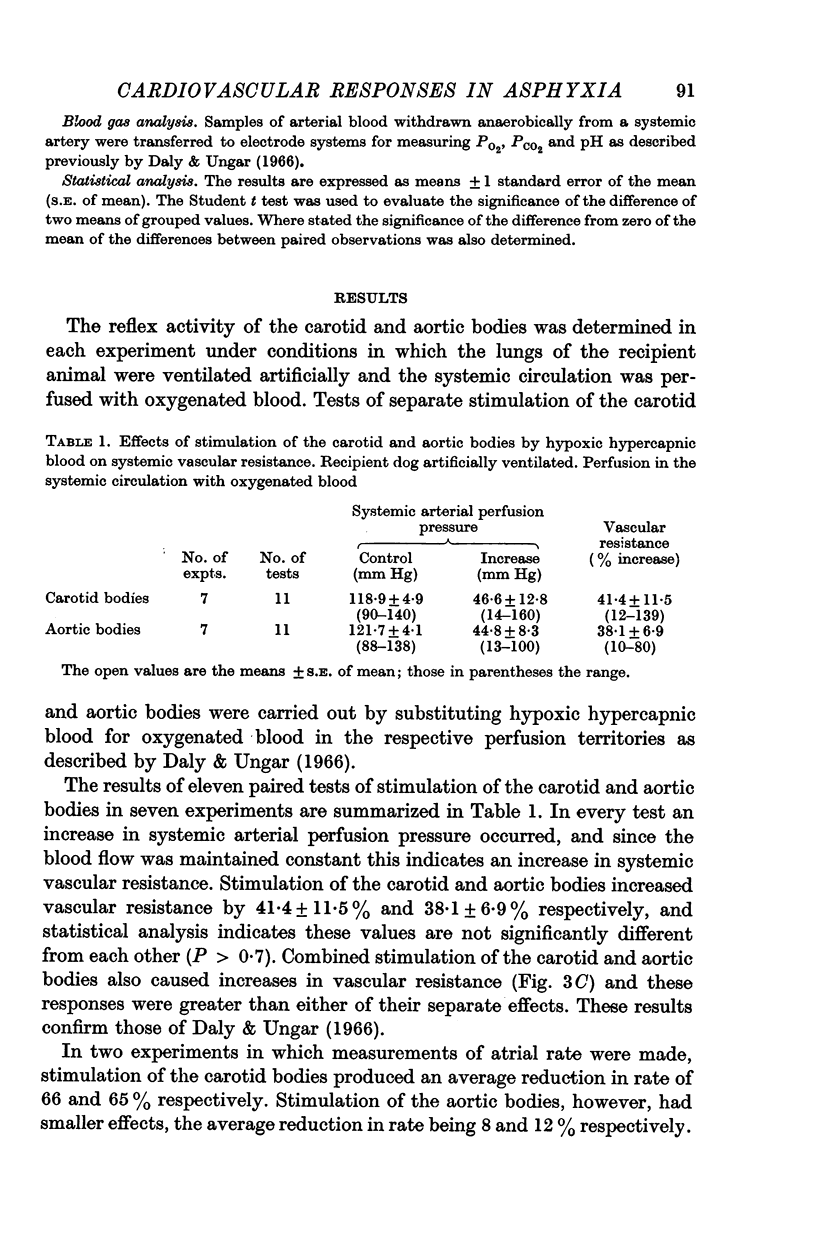
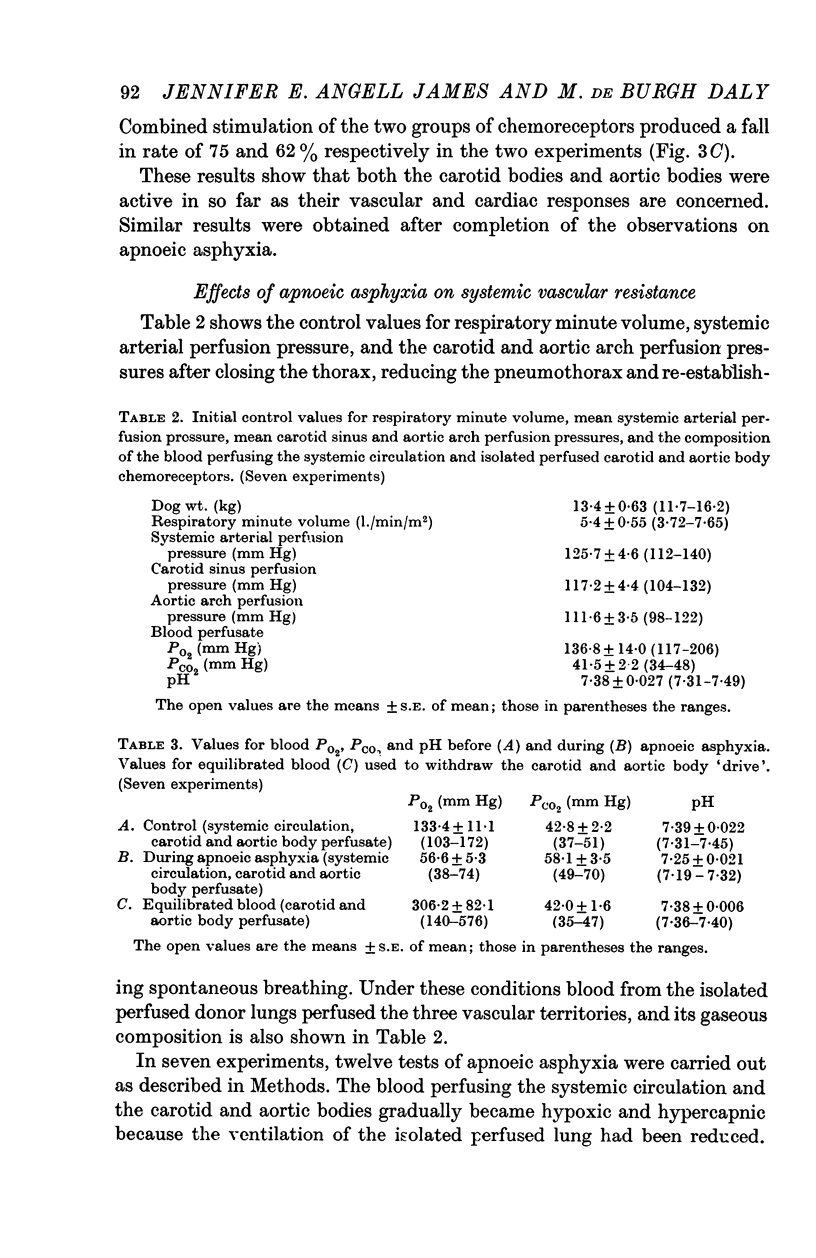
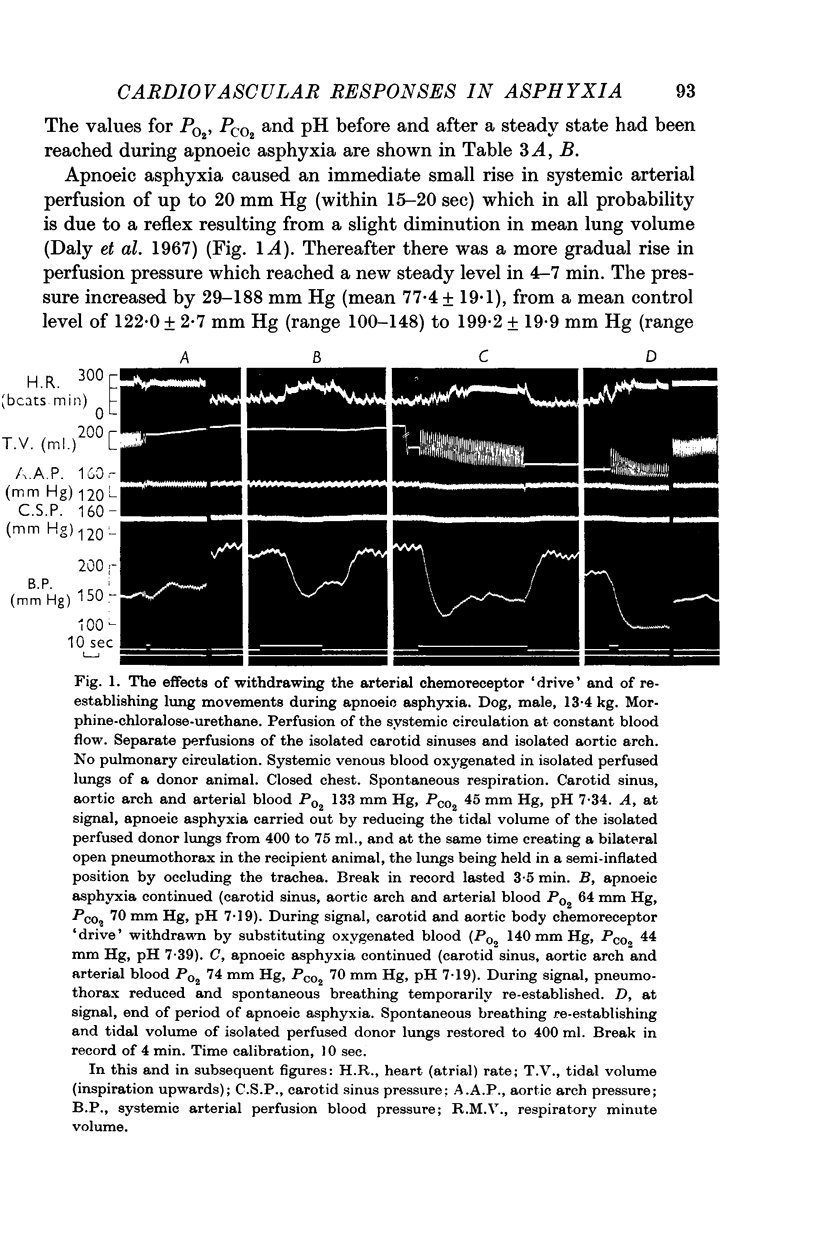
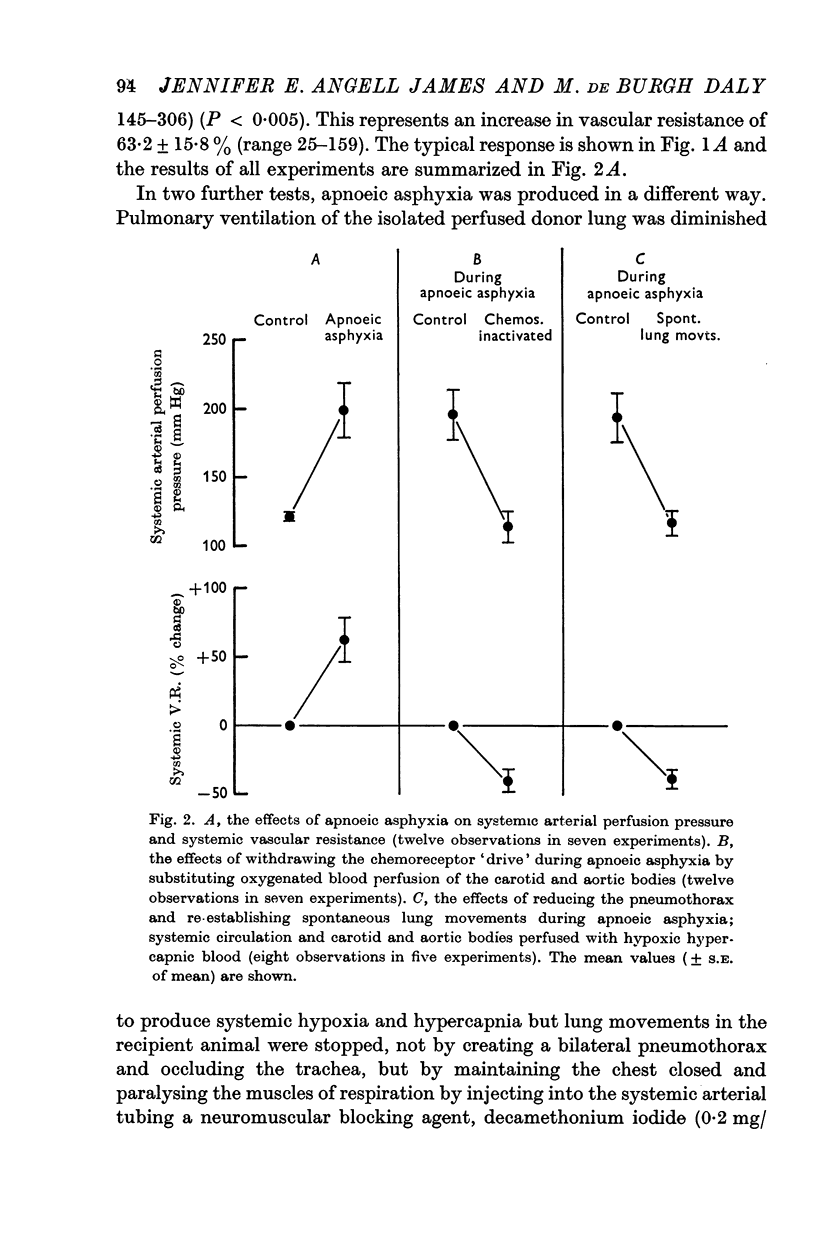
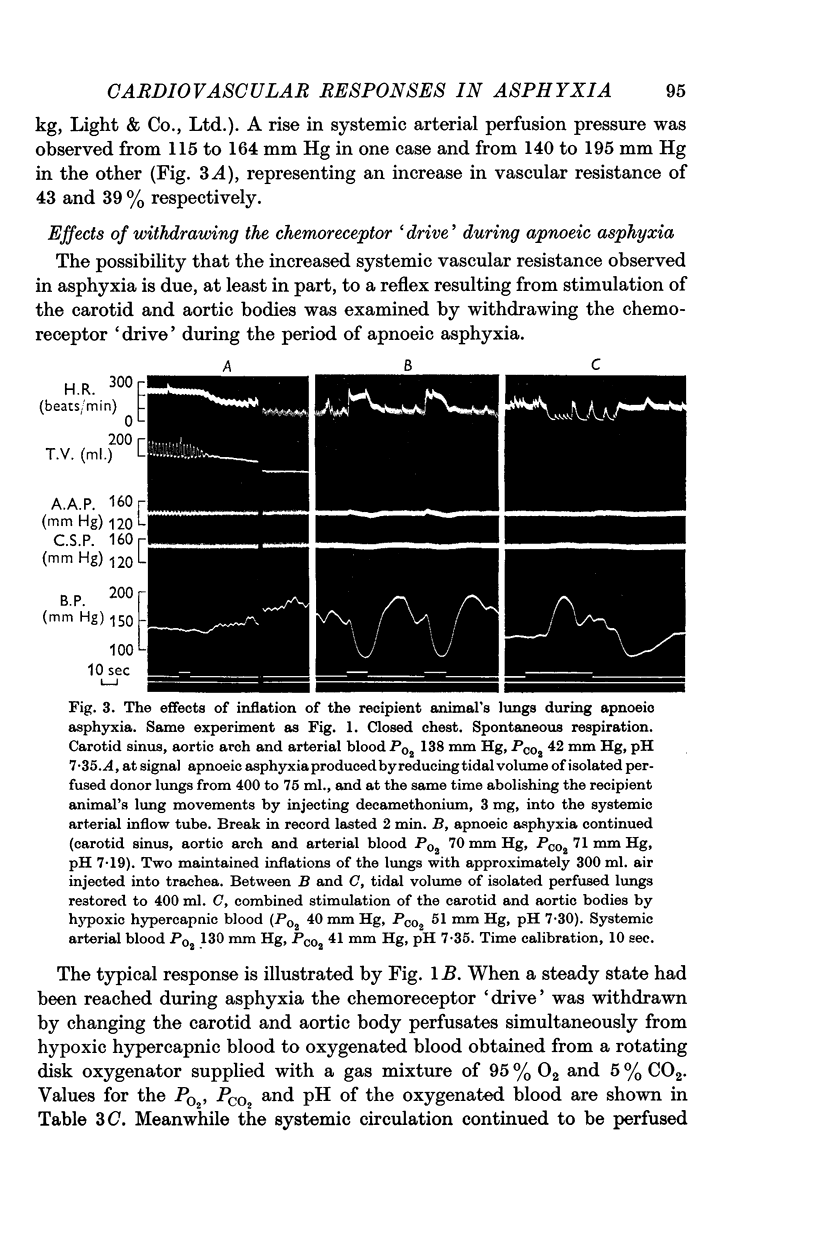
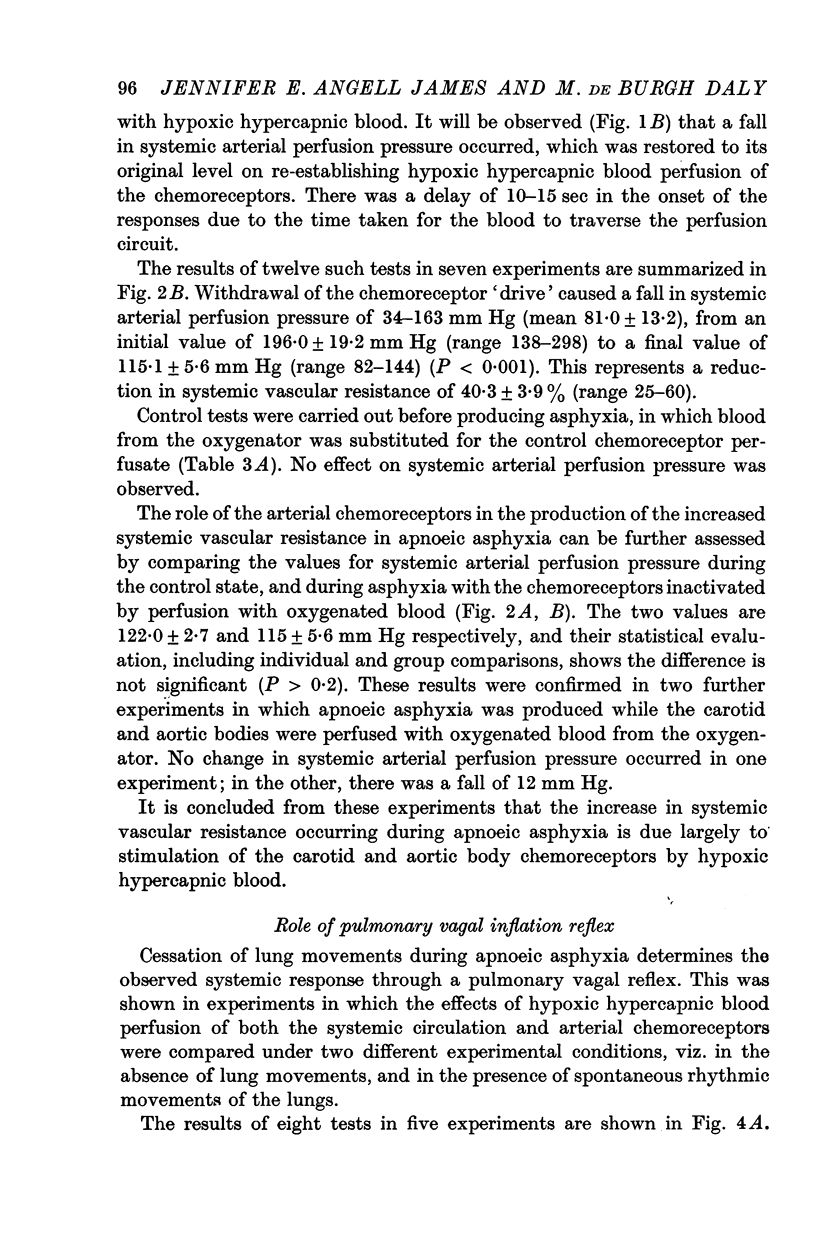
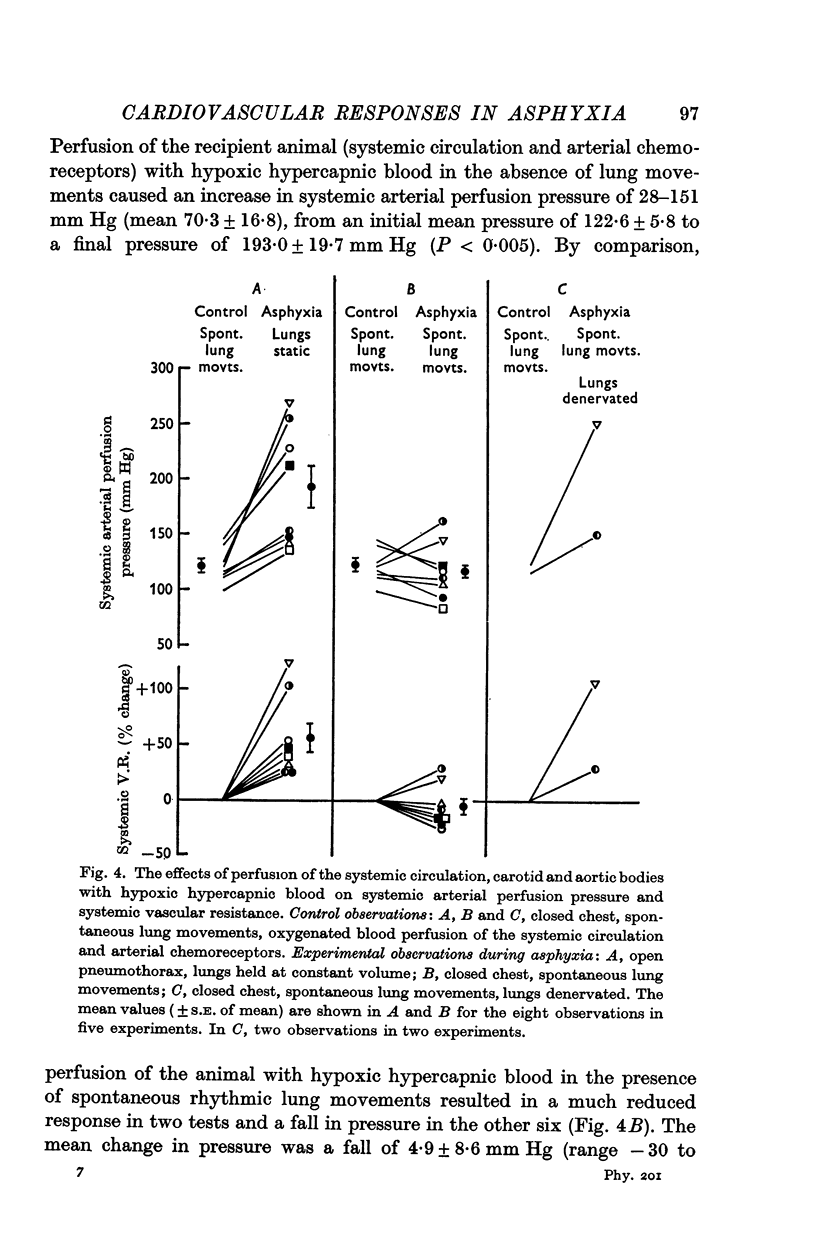
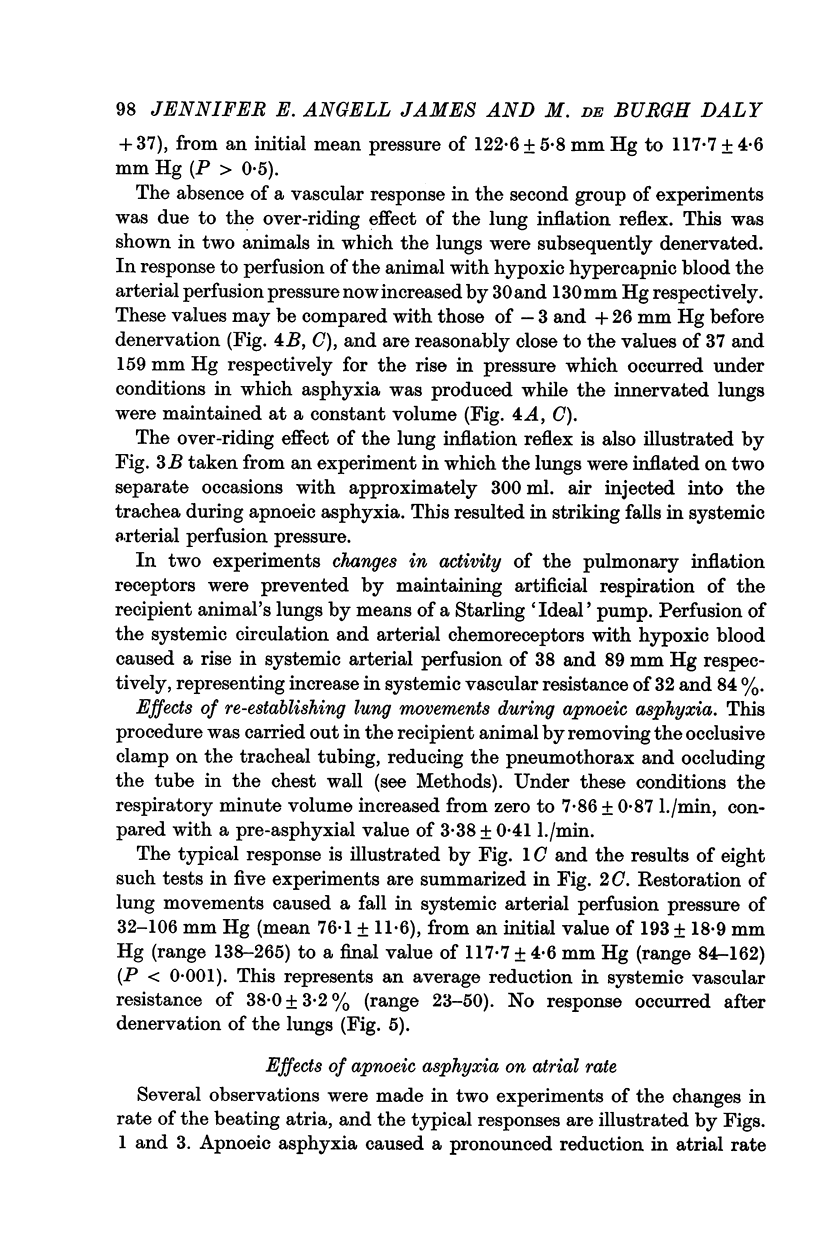
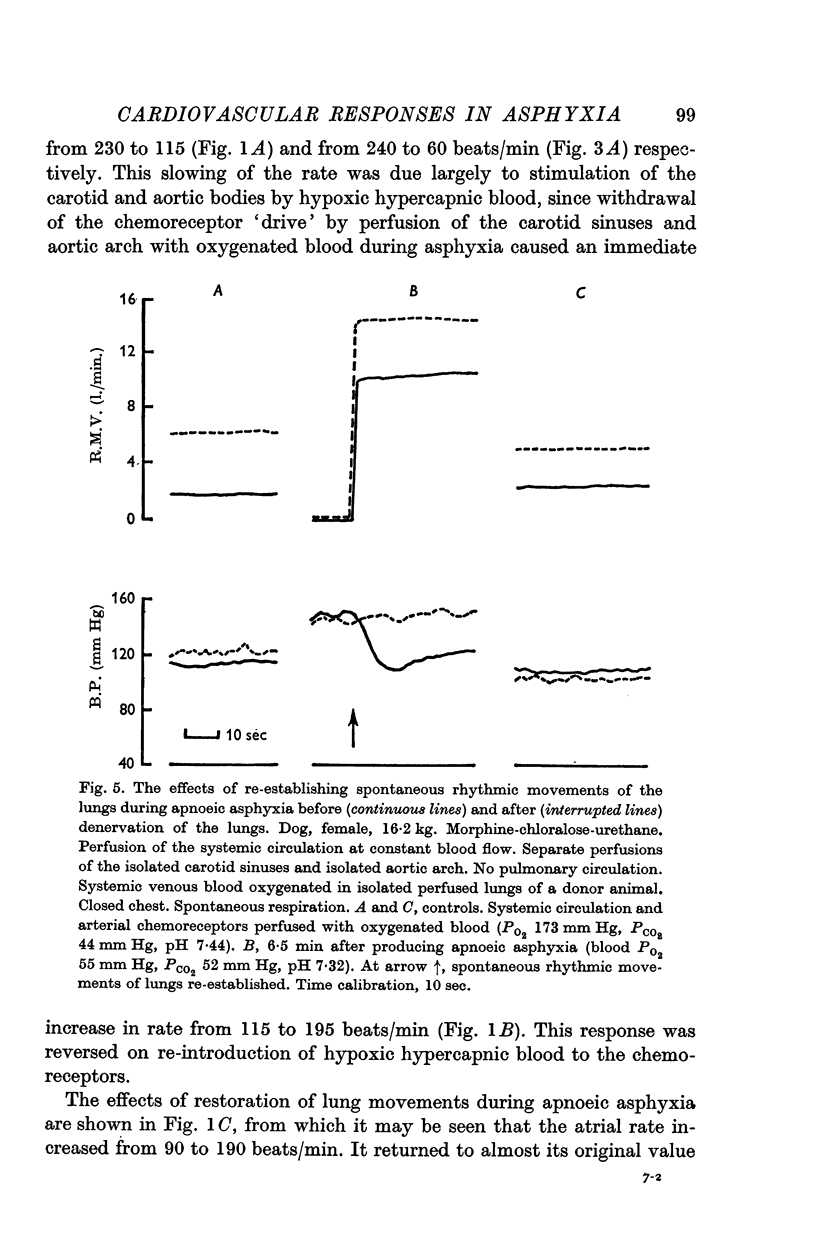
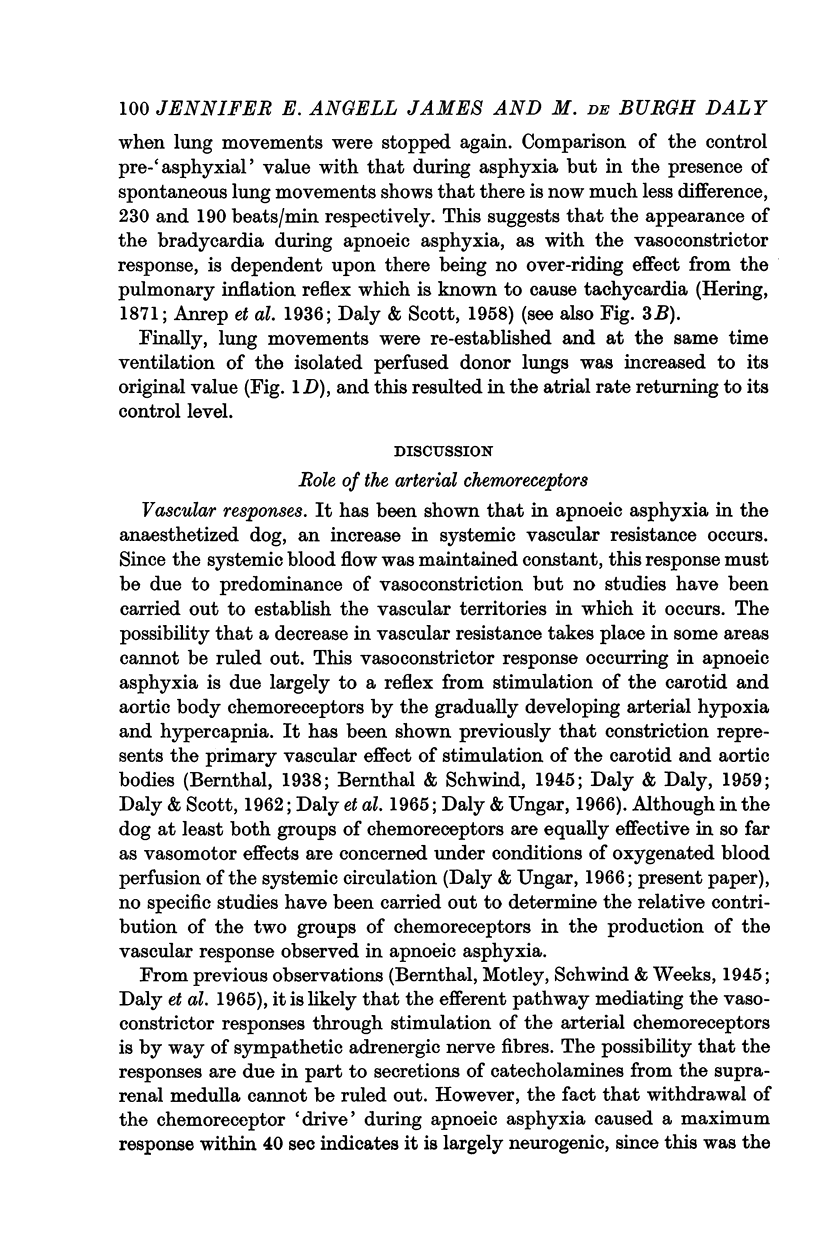
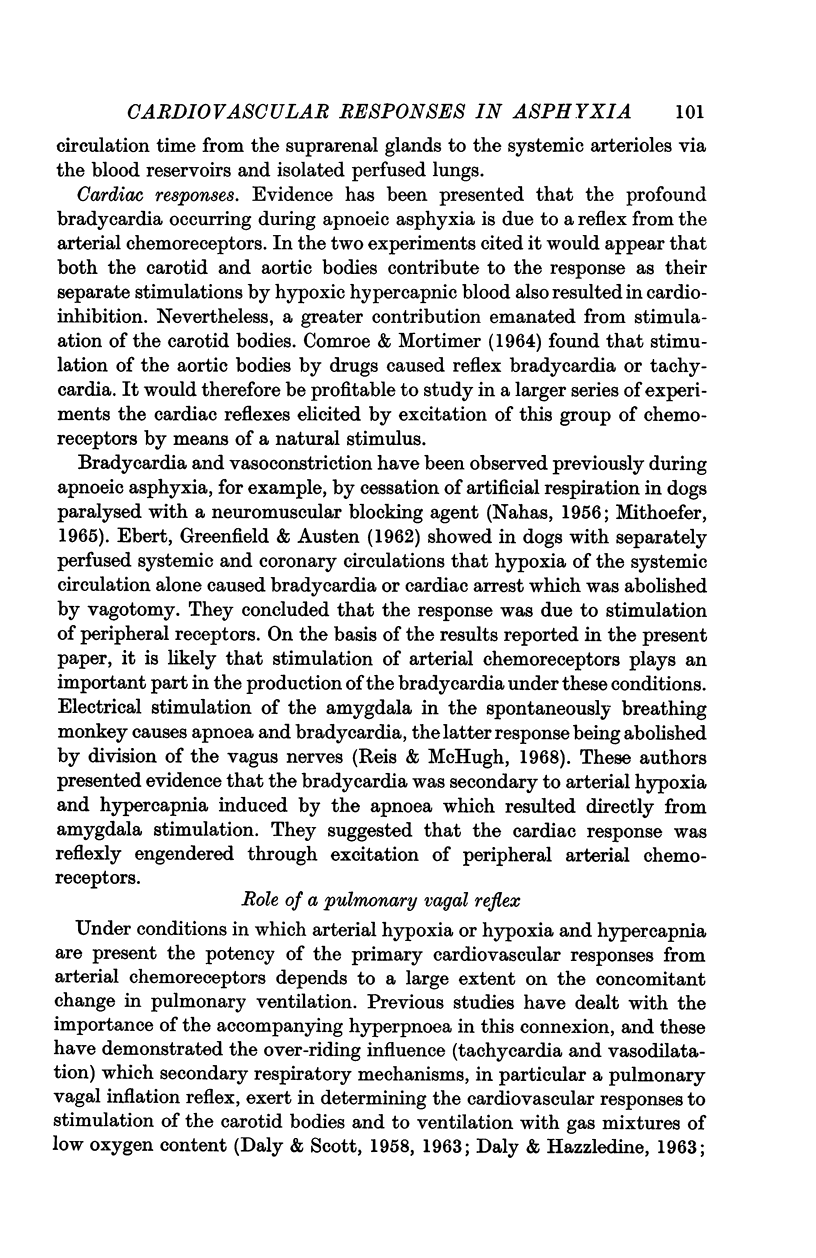
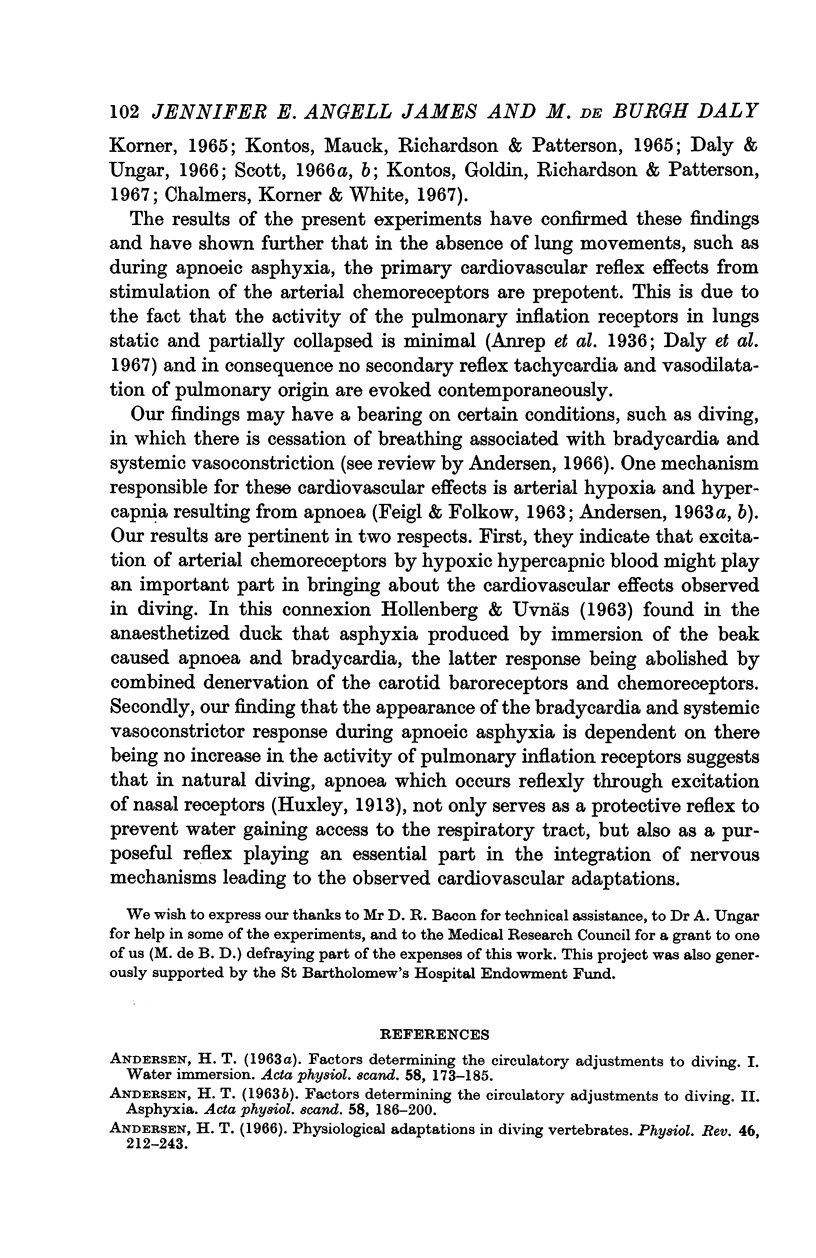
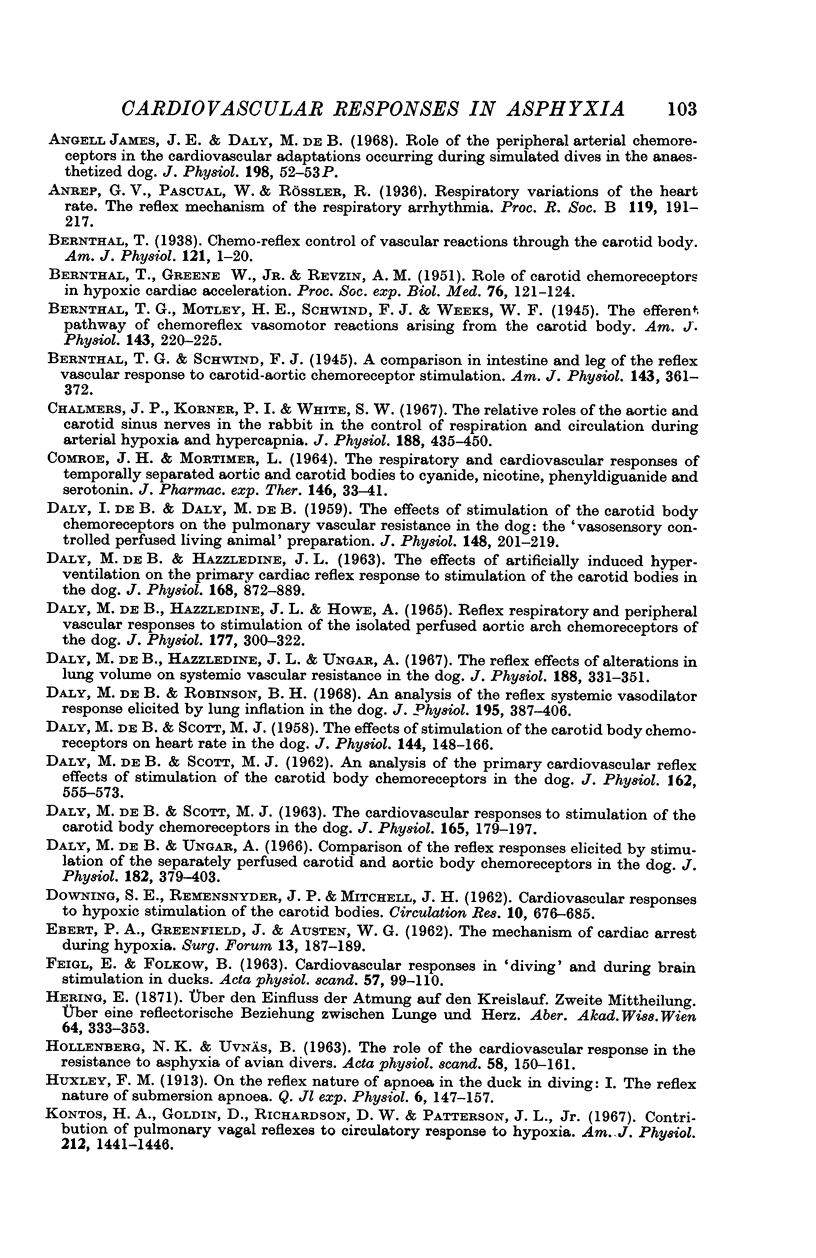
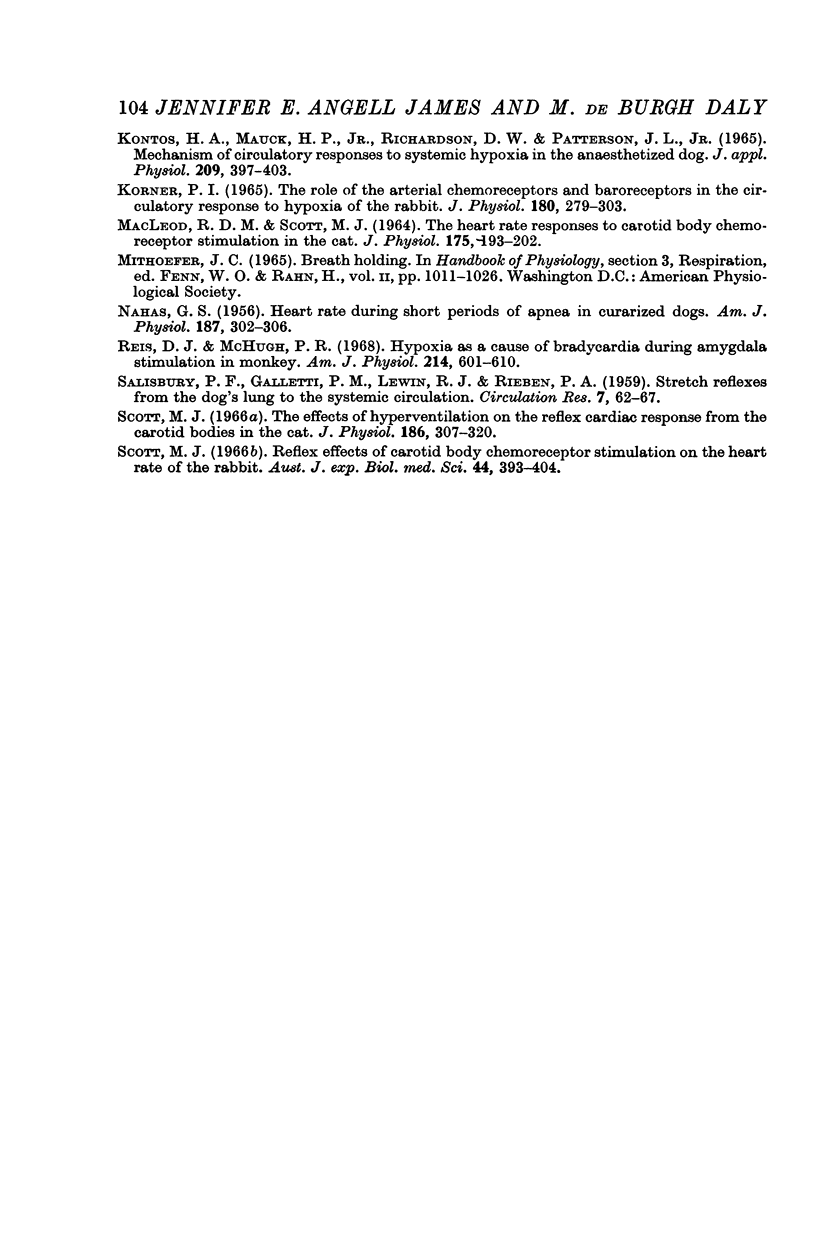
Selected References
These references are in PubMed. This may not be the complete list of references from this article.
- ANDERSEN H. T. Factors determining the circulatory adjustments to diving. I. Water immersion. Acta Physiol Scand. 1963 Jun-Jul;58:173–185. doi: 10.1111/j.1748-1716.1963.tb02639.x. [DOI] [PubMed] [Google Scholar]
- ANDERSEN H. T. Factors determining the circulatory adjustments to diving. II. Asphyxia. Acta Physiol Scand. 1963 Jun-Jul;58:186–200. doi: 10.1111/j.1748-1716.1963.tb02640.x. [DOI] [PubMed] [Google Scholar]
- Andersen H. T. Physiological adaptations in diving vertebrates. Physiol Rev. 1966 Apr;46(2):212–243. doi: 10.1152/physrev.1966.46.2.212. [DOI] [PubMed] [Google Scholar]
- BRENTHAL T., GREENE W., Jr, REVZIN A. M. Role of carotid chemoreceptors in hypoxic cardiac acceleration. Proc Soc Exp Biol Med. 1951 Jan;76(1):121–124. doi: 10.3181/00379727-76-18408. [DOI] [PubMed] [Google Scholar]
- COMROE J. H., Jr, MORTIMER L. THE RESPIRATORY AND CARDIOVASCULAR RESPONSES OF TEMPORALLY SEPARATED AORTIC AND CAROTID BODIES TO CYANIDE, NICOTINE, PHENYLDIGUANIDE AND SEROTONIN. J Pharmacol Exp Ther. 1964 Oct;146:33–41. [PubMed] [Google Scholar]
- Chalmers J. P., Korner P. I., White S. W. The relative roles of the aortic and carotid sinus nerves in the rabbit in the control of respiration and circulation during arterial hypoxia and hypercapnia. J Physiol. 1967 Feb;188(3):435–450. doi: 10.1113/jphysiol.1967.sp008148. [DOI] [PMC free article] [PubMed] [Google Scholar]
- DALY I. D., DALY M. D. The effects of stimulation of the carotid body chemoreceptors on the pulmonary vascular bed in the dog: the 'vasosensory controlled perfused living animal' preparation. J Physiol. 1959 Oct;148:201–219. doi: 10.1113/jphysiol.1959.sp006282. [DOI] [PMC free article] [PubMed] [Google Scholar]
- DALY M. D., HAZZLEDINE J. L. THE EFFECTS OF ARTIFICIALLY INDUCED HYPERVENTILATION ON THE PRIMARY CARDIAC REFLEX RESPONSE TO STIMULATION OF THE CAROTID BODIES IN THE DOG. J Physiol. 1963 Oct;168:872–889. doi: 10.1113/jphysiol.1963.sp007228. [DOI] [PMC free article] [PubMed] [Google Scholar]
- DALY M. D., SCOTT M. J. The cardiovascular responses to stimulation of the carotid body chemoreceptors in the dog. J Physiol. 1963 Jan;165:179–197. doi: 10.1113/jphysiol.1963.sp007051. [DOI] [PMC free article] [PubMed] [Google Scholar]
- DALYMDE B., HAZZLEDINE J. L., HOWE A. REFLEX RESPIRATORY AND PERIPHERAL VASCULAR RESPONSES TO STIMULATION OF THE ISOLATED PERFUSED AORTIC ARCH CHEMORECEPTORS OF THE DOG. J Physiol. 1965 Mar;177:300–322. doi: 10.1113/jphysiol.1965.sp007593. [DOI] [PMC free article] [PubMed] [Google Scholar]
- DE BURGH DALY M., SCOTT M. J. An analysis of the primary cardiovascular reflex effects of stimulation of the carotid body chemoreceptors in the dog. J Physiol. 1962 Aug;162:555–573. doi: 10.1113/jphysiol.1962.sp006950. [DOI] [PMC free article] [PubMed] [Google Scholar]
- DE DALY M. B., SCOTT M. J. The effects of stimulation of the carotid body chemoreceptors on heart rate in the dog. J Physiol. 1958 Nov 10;144(1):148–166. doi: 10.1113/jphysiol.1958.sp006092. [DOI] [PMC free article] [PubMed] [Google Scholar]
- DOWNING S. E., REMENSNYDER J. P., MITCHELL J. H. Cardiovascular responses to hypoxic stimulation of the carotid bodies. Circ Res. 1962 Apr;10:676–685. doi: 10.1161/01.res.10.4.676. [DOI] [PubMed] [Google Scholar]
- Daly M. D., Robinson B. H. An analysis of the reflex systemic vasodilator response elicited by lung inflation in the dog. J Physiol. 1968 Mar;195(2):387–406. doi: 10.1113/jphysiol.1968.sp008464. [DOI] [PMC free article] [PubMed] [Google Scholar]
- Daly M., Ungar A. Comparison of the reflex responses elicited by stimulation of the separately perfused carotid and aortic body chemoreceptors in the dog. J Physiol. 1966 Jan;182(2):379–403. doi: 10.1113/jphysiol.1966.sp007828. [DOI] [PMC free article] [PubMed] [Google Scholar]
- De Burgh Daly M., Hazzledine J. L., Ungar A. The reflex effects of alterations in lung volume on systemic vascular resistance in the dog. J Physiol. 1967 Feb;188(3):331–351. doi: 10.1113/jphysiol.1967.sp008142. [DOI] [PMC free article] [PubMed] [Google Scholar]
- FEIGL E., FOLKOW B. Cardiovascular responses in "diving" and during brain stimulation in ducks. Acta Physiol Scand. 1963 Jan-Feb;57:99–110. doi: 10.1111/j.1748-1716.1963.tb02577.x. [DOI] [PubMed] [Google Scholar]
- HOLLENBERG N. K., UVNAS B. The role of the cardiovascular response in the resistance to asphyxia of avian divers. Acta Physiol Scand. 1963 Jun-Jul;58:150–161. doi: 10.1111/j.1748-1716.1963.tb02637.x. [DOI] [PubMed] [Google Scholar]
- KONTOS H. A., MAUCK H. P., Jr, RICHARDSON D. W., PATTERSON J. L., Jr MECHANISM OF CIRCULATORY RESPONSES TO SYSTEMIC HYPOXIA IN THE ANESTHETIZED DOG. Am J Physiol. 1965 Aug;209:397–403. doi: 10.1152/ajplegacy.1965.209.2.397. [DOI] [PubMed] [Google Scholar]
- Kontos H. A., Goldin D., Richardson D. W., Patterson J. L., Jr Contribution of pulmonary vagal reflexes to circulatory response to hypoxia. Am J Physiol. 1967 Jun;212(6):1441–1446. doi: 10.1152/ajplegacy.1967.212.6.1441. [DOI] [PubMed] [Google Scholar]
- Korner P. I. The role of the arterial chemoreceptors and baroreceptors in the circulatory response to hypoxia of the rabbit. J Physiol. 1965 Sep;180(2):279–303. doi: 10.1113/jphysiol.1965.sp007703. [DOI] [PMC free article] [PubMed] [Google Scholar]
- MACLEOD R. D., SCOTT M. J. THE HEART RATE RESPONSES TO CAROTID BODY CHEMORECEPTOR STIMULATION IN THE CAT. J Physiol. 1964 Dec;175:193–202. doi: 10.1113/jphysiol.1964.sp007511. [DOI] [PMC free article] [PubMed] [Google Scholar]
- NAHAS G. G. Heart rate during short periods of apnea in curarized dogs. Am J Physiol. 1956 Nov;187(2):302–306. doi: 10.1152/ajplegacy.1956.187.2.302. [DOI] [PubMed] [Google Scholar]
- Reis D. J., McHugh P. R. Hypoxia as a cause of bradycardia during amygdala stimulation in monkey. Am J Physiol. 1968 Mar;214(3):601–610. doi: 10.1152/ajplegacy.1968.214.3.601. [DOI] [PubMed] [Google Scholar]
- SALISBURY P. F., GALLETTI P. M., LEWIN R. J., RIEBEN P. A. Stretch reflexes from the dog's lung to the systemic circulation. Circ Res. 1959 Jan;7(1):62–67. doi: 10.1161/01.res.7.1.62. [DOI] [PubMed] [Google Scholar]
- Scott M. J. Reflex effects of carotid body chemoreceptor stimulation on the heart rate of the rabbit. Aust J Exp Biol Med Sci. 1966 Aug;44(4):393–403. doi: 10.1038/icb.1966.37. [DOI] [PubMed] [Google Scholar]
- Scott M. J. The effects of hyperventilation on the reflex cardiac response from the carotid bodies in the cat. J Physiol. 1966 Oct;186(2):307–320. doi: 10.1113/jphysiol.1966.sp008036. [DOI] [PMC free article] [PubMed] [Google Scholar]


